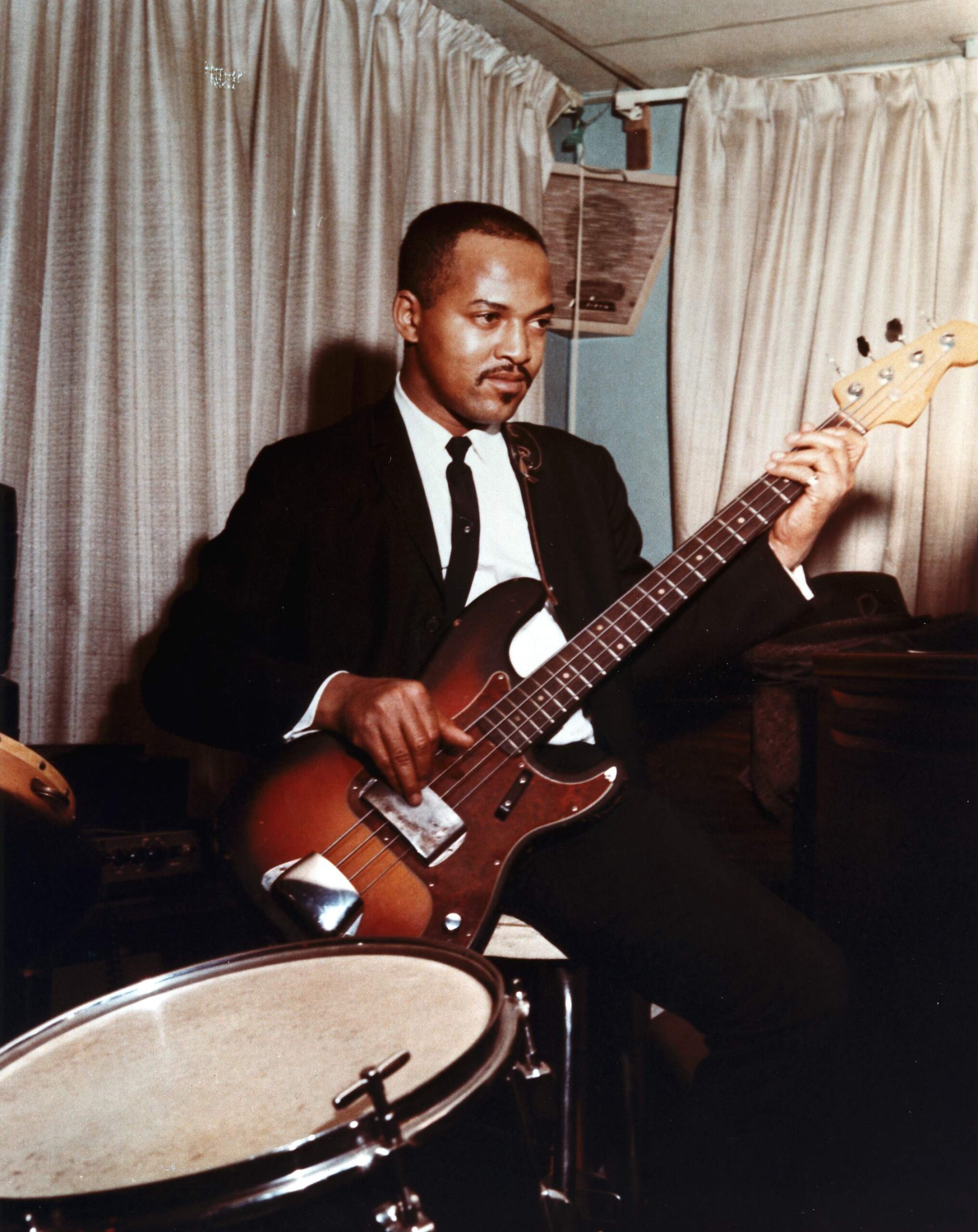 James Jamerson is just one of many session players in the 50s and 60s who went virtually unknown during his lifetime. Even now, after being inducted into the Rock and Roll Hall of Fame in 2000, and being featured in a documentary in 2002, he’s still not as well-known as he should be. Especially for a man who influenced Paul McCartney’s bass playing.
James Jamerson is just one of many session players in the 50s and 60s who went virtually unknown during his lifetime. Even now, after being inducted into the Rock and Roll Hall of Fame in 2000, and being featured in a documentary in 2002, he’s still not as well-known as he should be. Especially for a man who influenced Paul McCartney’s bass playing.
I’d never heard of Jamerson before reading about his influence on McCartney’s bass playing on the song “Taxman,” but I’d certainly heard his playing long before that.
Finding the tracks Jamerson played on requires a little digging. RYM provides 77 credits, and Discogs lists 164 records and singles where Jamerson is credited for playing bass. 10 for writing and arrangement. The bulk of those credits are post-Motown. (Intriguingly he is listed on Discogs as going by “Igor” in one instance. I’d like to know the story behind that…)
James Jamerson and a legacy of Motown hits
Jamerson wasn’t credited for most of his Motown work (which was not unusual), so most Motown fans didn’t know his name. But, as part of The Funk Brothers, he likely played on most (if not all) of Motown’s R&B singles. Including more than 100 that reached number one on the R&B charts.
The Miracles, The Supremes, The Marvelettes, Martha and the Vandellas, Marvin Gaye, The Four Tops, The Spinners, The Jackson 5, and many others. All household names, but the backing band that powered all those songs were almost unknown. Apparently on purpose. According to the (now archived) Rock and Roll Hall of Fame inductee page for Jamerson:
According to Motown keyboardist and bandleader Earl Van Dyke, “We were sworn to secrecy, and one of the secrets was between James and [drummers] Benny Benjamin and Uriel Jones.” Jamerson followed the company west when Berry moved Motown’s headquarters to Los Angeles, but the association between Motown and Jamerson ended in 1973.
The man who found the groove
According to Allan “Dr. Licks” Slutsky, the electric bass was “still an infant” until “the first note Jamerson played on a Motown record.”
In one momentous and soulful trifecta, the instrument found its voice, a fledgling record company discovered its heartbeat, and a generation took a bold step toward finding its groove.
That might possibly be giving Jamerson a little too much credit. Maybe. Then again, who am I to argue with a Beatle about bass?
Paul McCartney and James Jamerson
Consider, Sir Paul McCartney, who knew Jamerson by sound but not by name. In a 2018 interview with Reverb, McCartney noted that his bass playing was influenced a lot by Jamerson.
But part of it, I think James Jamerson, him and me, I’d share the credit there. I was nicking a lot off him. Funnily enough, I’d always liked bass. My dad, as I say, was a musician and I remember he would give me little sort of lessons, not actual sit-down lessons, but when there was something on the radio, he’d say hear that low? That’s the bass. I remember him actually pointing out what a bass was, and he’d do little lessons in harmony [sings a line and then thirds above].
So when I came to The Beatles I had a little bit of musical knowledge through him, but very amateur. And I started listening to other bass players. Mainly as time went on it was Motown, James Jamerson—who became just my hero, really. I didn’t actually know his name until quite recently. James was very melodic, and that got me more interested.
Imagine being a musical influence on McCartney but never finding out because he didn’t know your name.
The shadows of Motown
Jamerson has gotten some acclaim, posthumously. Allan Slutsky wrote Standing in the Shadows of Motown (1987), digging deep into Jamerson’s work. The documentary film of the same name (from 2002) covered The Funk Brothers as a group through interviews with surviving members of the band.
James Jamerson was born in either 1938 or 1936, depending on the source, in South Carolina. He died, far too young, in 1983 of pneumonia. His son, also named James Jamerson, also went on to play bass as a session musician and as part of the group Chanson. We’ll take a look at James Jamerson Jr. another day.
Next time you hear one of those Motown classics, think about the session players like Jamerson who made them magic.
